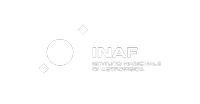EWC - Enabling Weak lensing Cosmology
Abstract: Our understanding of cosmology and fundamental physics continues to be challenged by ever more precise experiments. The resulting “standard” model of cosmology describes the data well, but is unable to explain the origin of the main constituents of our Universe, namely dark matter and dark energy. More than an order of magnitude improvement in the quality and quantity of observational data is needed. This has motivated ESA to select Euclid as the second mission of its cosmic vision program, with a scheduled launch in 2020. It is designed to accurately measure the alignments of distant galaxies due to the differential deflection of light-rays by intervening structures, a phenomenon called gravitational lensing. Euclid will measure this signal by imaging 1.5 billion galaxies with a resolution similar to that of the Hubble Space Telescope.
Although Euclid is designed to minimize observational systematics the observations are still compromised by two factors. Various instrumental effects need to be corrected for, and the tremendous improvement in precision has to be matched with comparable advances in the modelling of astrophysical effects that affect the signal. The objective of this proposal is to make significant progress on both fronts. To do so, we will (i) quantify the morphology of galaxies using archival HST observations; (ii) carry out a unique narrow-band photometric redshift survey to obtain stateof-the-art constraints on the intrinsic alignments of galaxies that arise due to tidal interactions, and would otherwise contaminate the cosmological signal; (iii) integrate these results into the end-to-end simulation pipeline; (iv) perform a spectroscopic redshift survey to calibrate the photometric redshift technique. The Euclid Consortium has identified these as critical issues, which need to be addressed before launch, in order to maximise the science return of this exciting mission, and enable the dark energy science objectives of Europe.
 EWC has received funding from the European Union's Horizon 2020 research and innovation programme under grant agreement No 776247.
EWC has received funding from the European Union's Horizon 2020 research and innovation programme under grant agreement No 776247.
Dettagli tecnici
Struttura INAF: OA Roma
Bando: COMPET-4-2017
Riferimento contratto n. 776247
Inizio: 01/04/2018
Durata: 48 mesi
Coordinamento: UNIVERSITY COLLEGE LONDON (UCL)
Partner:
|
ULEI (NL) |
CSIC (ES) |
IFAE (ES) |
CIEMAT (ES) |
UDUR (UK) |
|
CNRS (FR) |
UBO (DE) |
MPG (DE) |
FCIENCIAS.ID (PT) |
|

